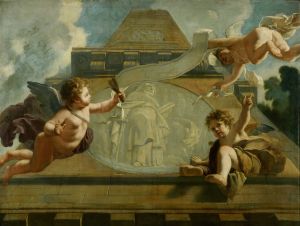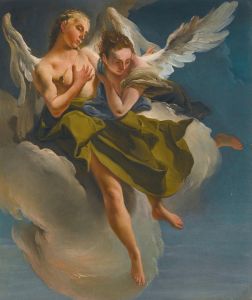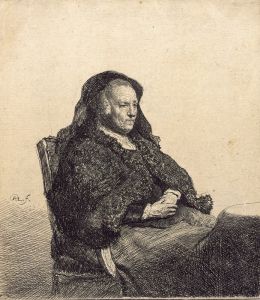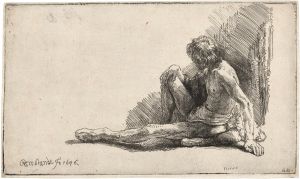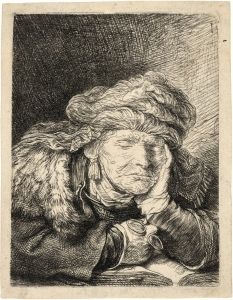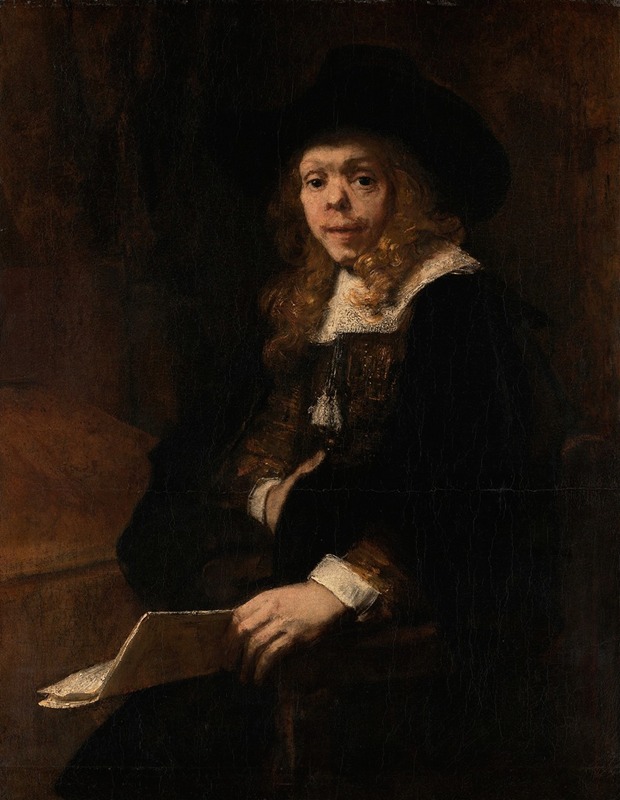
Portrait of Gerard de Lairesse
A hand-painted replica of Rembrandt van Rijn’s masterpiece Portrait of Gerard de Lairesse, meticulously crafted by professional artists to capture the true essence of the original. Each piece is created with museum-quality canvas and rare mineral pigments, carefully painted by experienced artists with delicate brushstrokes and rich, layered colors to perfectly recreate the texture of the original artwork. Unlike machine-printed reproductions, this hand-painted version brings the painting to life, infused with the artist’s emotions and skill in every stroke. Whether for personal collection or home decoration, it instantly elevates the artistic atmosphere of any space.
"Portrait of Gerard de Lairesse" is a painting by the renowned Dutch artist Rembrandt van Rijn. This artwork is a testament to Rembrandt's skill in portraiture and his ability to capture the essence of his subjects with remarkable depth and realism. The painting depicts Gerard de Lairesse, a notable figure in the Dutch art world of the 17th century.
Gerard de Lairesse (1641–1711) was a Dutch Golden Age painter and art theorist, known for his classical style and influence on the art scene in the Netherlands. Despite being a talented artist himself, de Lairesse is perhaps best remembered today for his writings on art theory, which had a significant impact on the development of art in the 18th century. His works often reflected the classical ideals of beauty and harmony, which were in contrast to the more dramatic and emotional style of Rembrandt.
Rembrandt, born in 1606 in Leiden, was one of the most important and influential figures in the history of Western art. Known for his innovative use of light and shadow, as well as his keen ability to portray human emotion, Rembrandt's portraits are celebrated for their psychological depth and realism. His works often explored themes of identity, morality, and the human condition, making him a master of capturing the complexities of his subjects.
The "Portrait of Gerard de Lairesse" is believed to have been painted during a period when Rembrandt was experiencing both personal and financial difficulties. Despite these challenges, he continued to produce works of exceptional quality. This portrait is a fine example of Rembrandt's mature style, characterized by a rich palette, dynamic composition, and a profound sense of character.
In the portrait, de Lairesse is depicted with a thoughtful expression, his gaze directed slightly away from the viewer. Rembrandt's use of chiaroscuro, the contrast between light and dark, is evident in the way de Lairesse's face is illuminated against a darker background, drawing attention to his features and expression. The texture of the skin, the subtle play of light on the fabric of his clothing, and the meticulous attention to detail all contribute to the lifelike quality of the painting.
The relationship between Rembrandt and de Lairesse is an intriguing aspect of this portrait. While Rembrandt's style was rooted in the Baroque tradition, with its emphasis on realism and emotional depth, de Lairesse was an advocate for the classical style, which valued idealized beauty and order. This contrast in artistic philosophies adds an additional layer of interest to the portrait, as it captures a moment of intersection between two differing artistic visions.
Today, "Portrait of Gerard de Lairesse" is housed in the Metropolitan Museum of Art in New York City, where it continues to be admired by art enthusiasts and scholars alike. The painting is not only a representation of de Lairesse but also a reflection of Rembrandt's enduring legacy as a master portraitist. Through this work, viewers can appreciate the skill and artistry of Rembrandt, as well as gain insight into the rich tapestry of the Dutch Golden Age of painting.










